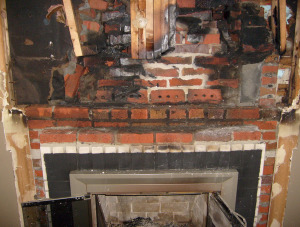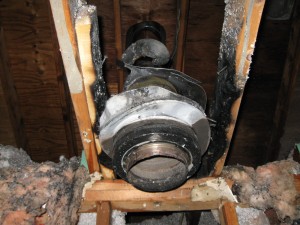[vc_row][vc_column][vc_column_text]A fireplace fire? Did you do a “double-take” when reading the title? I know what you’re thinking. “Fireplaces are supposed to have fires!” But not to cause them.
Unfortunately, fireplaces, and their close cousins wood burning stoves, are involved in 42% of all home heating fires. And of course, most of these fires increase right around the holidays. Believe it or not, 33% of American homes use fireplaces and wood stoves as primary heat sources. And the cost? Nationally, about 30 million dollars each year! (Statistics from the Chimney Safety Institute of America)[/vc_column_text][/vc_column][/vc_row][vc_row][vc_column width=”1/2″][vc_column_text]



[/vc_column_text][/vc_column][vc_column width=”1/2″][vc_column_text]
So what can you do to make sure your holidays are warm and bright and without the tragedy of a fireplace fire – or the hidden hazard of carbon monoxide poisoning from a cracked or broken chimney?
1. Hire a chimney sweep!
Signs that you have a chimney fire are excessive smoke blowing back into your home after lighting the fire – even when the flue is open; popping and crackling sounds coming from above the fire, and noticing burns on your roofing tiles when putting up your Christmas lights.
Of course, all these signs mean it’s a little late to prevent a fireplace and chimney fire.
Therefore, the National Fire Protection Association recommends that chimneys be cleaned once a year at the beginning of the winter to remove creosote (i.e., soot) and debris – including bird’s nests and squirrel nests that can ignite as soon as you light the first fire.
Fires can happen like it did for these homeowners in Cherry Hill, NJ!
Chimney sweeping is NOT something for a “Do It Yourselfer” to tackle! Unless you have the right equipment with a vacuum truck you’ll only be creating an unbelievable mess in your home. For a few hundred dollars you can have peace of mind that the job was done right – and a clean home without the mess. The price is well justified when you consider that the average cost of cleaning up after fire damage from a chimney fire is between two and twenty-five thousand dollars!
To find a certified chimney sweep in your area contact the Chimney Safety Institute of America.
- 2. And, while they’re at it, have them check for damage
In addition to cleaning, a professional chimney sweep will inspect the chimney structure and liners for cracks, loose bricks or missing mortar. They know what to look for. And, they can replace the chimney cap fitted with wire-mesh sides so it covers the top of the chimney and keeps rain, birds, squirrels and debris outside, where they’re meant to be.[/vc_column_text][/vc_column][/vc_row][vc_row][vc_column][vc_column_text]
But beyond hiring professional help, you can decrease your risk of a chimney or fireplace fire by:
- 3. Burning ONLY seasoned hardwoods
Before you build your fire, choose dense woods like oak, maple, or walnut. Green wood and resinous softwoods such as pine produce more creosote, a flammable byproduct of combustion that can build up in the chimney. Make sure the wood has been split, stored and seasoned in a dry place for at least six months. And, don’t burn cardboard boxes, trash or debris in your fireplace or wood stove.
- 4. Setting it up right!
Before you build the fire, clear the area around the hearth of debris, decorations and flammable materials.
When building a fire, place logs at the rear of the fireplace on an adequate supporting grate. Build small fires that burn completely and produce less smoke. A fire that is too large or too hot can crack the chimney. And, whatever you do, don’t use flammable liquids to start a fire in fireplace or wood stove – use kindling instead.
Leave glass doors open while burning a fire. Leaving the doors open ensures that the fire receives enough air to ensure complete combustion and keeps creosote from building up in the chimney. But keep the metal mesh screen closed when the glass doors are open to keep embers from getting out of the fireplace area.
And one more thing:
- 5. Protect the Outside of Your Home
Stack firewood outdoors at least 30 feet away from your home. This keeps the hazard of ignition down in case embers escape the chimney. But, it has an additional benefit too: it prevents your home being infested by termites! Keep the roof clear of leaves, pine needles and other debris and remove branches hanging above the chimney, flues or vents.
But, if these tips for prevention have come too late and you find your home filled with smoke and soot from a fireplace fire, don’t despair. PuroClean Emergency Recovery Services is here to help you 24 hours a day, 7 days a week. And, we’re only a phone call away at 877-750-7876
[/vc_column_text][/vc_column][/vc_row]
